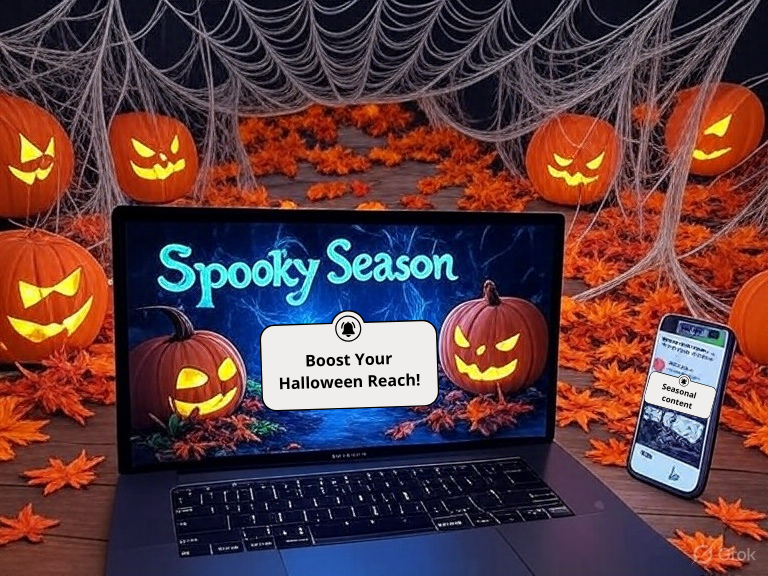5 minutos de leitura
October 15, 2025
The Rise of Personalized Notifications: Tailoring Content for Different Reader Segments
In today’s noisy digital world, personalization has become one of the most effective ways for publishers to capture and retain attention. Audiences are diverse — not just in interests, but in geography, browsing habits, and devices. Sending the same message to everyone, everywhere, no longer works. For websites, blogs, and media publishers, web push notifications are a direct line of communication with readers. But to make them truly effective, publishers need to make those messages feel personal and relevant — without overcomplicating the process or compromising user privacy.


Why Personalization Matters for Publishers
For content-driven websites, engagement depends heavily on context. What works for a reader in France may not resonate with someone in Mexico. A headline that drives clicks on desktop might be too long or clunky for mobile.
Personalization doesn’t have to mean deep behavioral tracking or collecting sensitive data. Instead, it’s about delivering notifications that make sense for who your audience is, where they’re located, and how they consume content.
Even small adjustments — like changing timing, tone, or message format — can make push notifications more impactful and human.
Country-Based Targeting: Speaking the Reader’s Language
Different countries have different cultures, interests, and seasonal moments. A successful publisher recognizes that what engages readers in France might not have the same effect in Brazil.
By targeting push notifications by country, you can:
- Reference local events or holidays that matter to readers.
- Highlight region-specific news or topics.
- Use language and expressions that feel native and natural.
For example, a news website might promote breaking stories relevant to each region, while a recipe blog could send seasonal dishes inspired by local ingredients. These subtle touches help readers feel that your content “speaks” directly to them — a powerful driver of loyalty and engagement.
Platforms like Outpush, for instance, make this easy by allowing publishers to segment notifications by country, ensuring messages reach the right audience in the right place.

Device-Based Targeting: Optimizing for the Reader’s Experience
Another key aspect of personalization is device type. The way users consume content on mobile versus desktop is vastly different — and your push notifications should reflect that.
On mobile, attention spans are shorter, and space is limited. Notifications should be concise, visual, and easy to digest. On desktop, users have more time and screen space, which means longer headlines or additional context can work better.
Here’s how to adapt:
- Mobile notifications: Use short, action-driven messages. Emojis can add clarity or visual appeal.
- Desktop notifications: Offer slightly more detail and context to encourage clicks.
With tools like Outpush, publishers can automatically adjust push delivery and formatting based on device type, helping messages feel natural no matter how readers connect.
Example: A Travel Blog Connecting with Global Readers
Imagine a travel blog with audiences in different parts of the world. Instead of sending a single generic message, they tailor their notifications slightly:
- For readers in Europe:
“✈️ Autumn escapes await! Discover warm destinations just a short flight away.” - For readers in Latin America:
“☀️ Ready for your next adventure? Explore top destinations for the upcoming holidays.”
Both messages promote similar content — but each feels more personal and timely to its audience. When combined with device targeting, the mobile version can be shorter and more visual, while the desktop version can add extra details like travel guides or recommendations.
Privacy-Friendly Personalization That Works
One of the biggest misconceptions about personalization is that it requires user data tracking. But for publishers, contextual personalization — based on country, device, or content category — can be just as effective.
This approach offers three main benefits:
- It’s simple – No need for complex user profiles or data-heavy systems.
- It’s privacy-friendly – You’re not collecting sensitive personal information.
- It’s scalable – Works across large and diverse audiences with minimal setup.
By focusing on context rather than identity, publishers can build trust with their readers while still enjoying higher engagement and better monetization opportunities.
How to Measure the Impact of Personalized Pushes
Once publishers begin tailoring notifications, performance measurement becomes crucial. Monitor metrics such as:
- Click-Through Rate (CTR) by country or device.
- Subscriber growth across audience segments.
- Engagement time — whether readers return to explore related articles.
Analyzing these metrics helps refine strategy. For example, you may find that mobile users in one region respond better to entertainment headlines, while desktop readers in another country engage more with politics or culture.
These insights allow for ongoing improvement without requiring deep analytics integration.

Tips for Crafting Personalized Notification Campaigns
Adjust timing to local time zones
A “Good Morning” message should actually arrive in the morning for each country.
Use device-appropriate language
Shorter, emoji-friendly headlines for mobile; slightly longer, descriptive ones for desktop.
Highlight local or seasonal relevance
Tie your messages to local events, cultural moments, or seasonal changes for stronger resonance.
Keep testing and refining
A/B test by region or device to identify what tone and content drive more engagement.
Conclusion
Personalization isn’t about complexity — it’s about relevance. For publishers, web push notifications offer a simple yet powerful way to make readers feel recognized and understood.
By focusing on country and device segmentation — like the approach supported by Outpush — publishers can deliver the right message, at the right time, to the right readers.
It’s a smarter, privacy-safe way to connect with audiences everywhere, turning casual visitors into loyal followers and occasional readers into regular subscribers.






